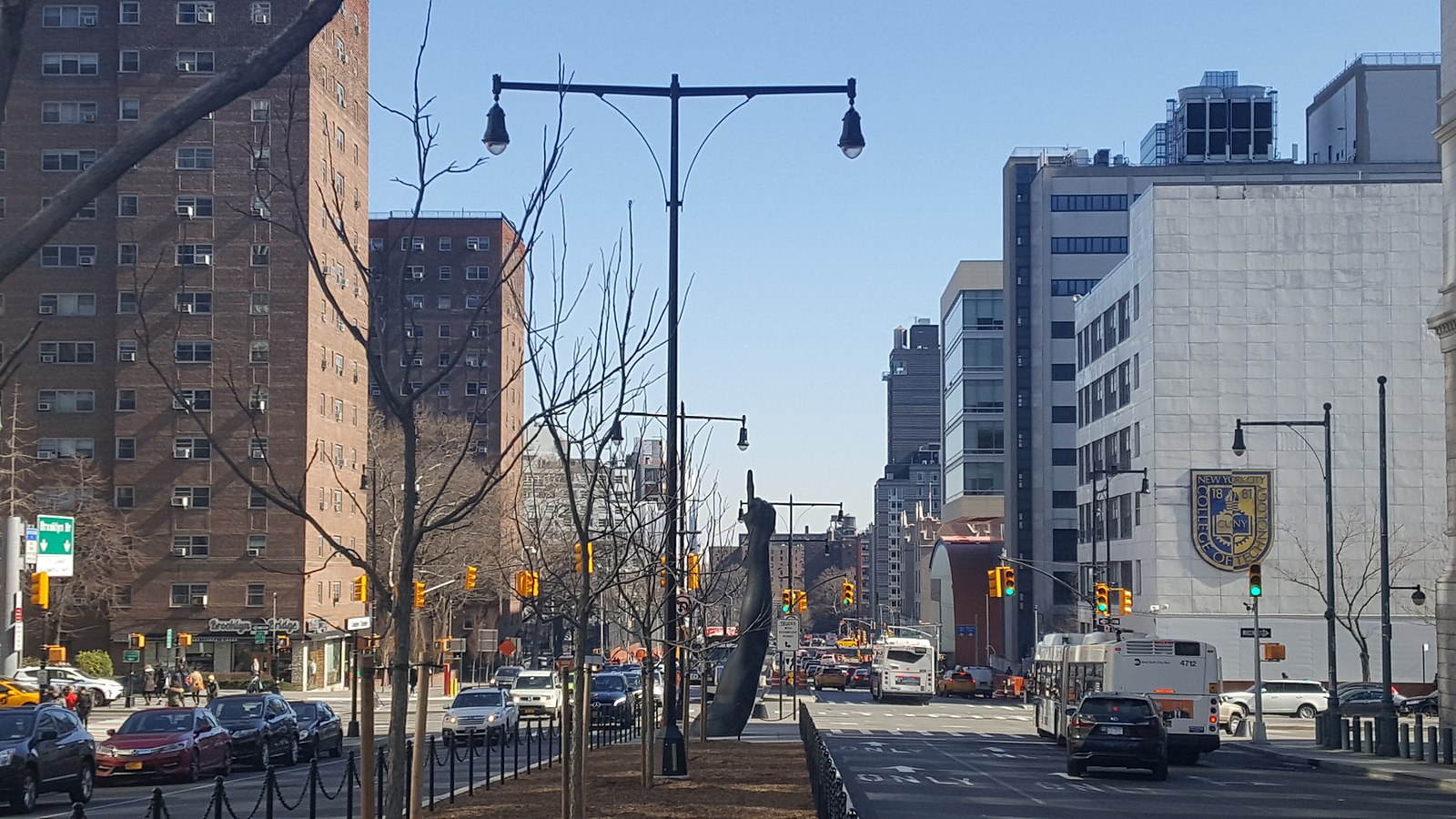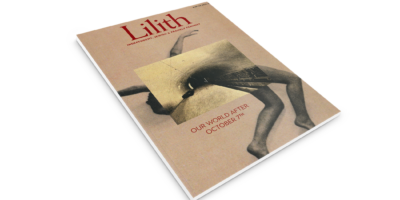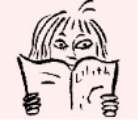
Where Art and Judaism Crossover (in Brooklyn)
Since she moved to New York City in 2001, Rebecca Guber has been at the forefront of radical Jewish art and community making. A self-described serial entrepreneur, she has planned festivals, directed fellowships, and (most recently) been the leader of a global network of Jewish artists called Asylum Arts.
Now, Guber is taking on an ambitious new project as the founding director of The Neighborhood: An Urban Center for Jewish Life, which has the lofty aim of connecting all the Jews in Brooklyn and becoming a dynamic hub for Jewish culture and life. Recently, I got to sit down and ask her all about it.
How did you find your way to the world of Jewish cultural life in New York?
I’m actually a first generation American Jew who grew up in St. Louis, Missouri. My parents were both born in Germany in the displaced persons camps; their first language was Yiddish. I always say I’m like a generation off Jewishly, because most people’s grandparents were Yiddish speakers, but for me it was my parents. Now, of course, I feel deeply appreciative because it made me very connected, but I think it’s given me a bit of an outsider view on being American. I moved to New York after attending college on the West Coast, at a time that ended up being two weeks before 9/11. Which was really crazy.
Right after 9/11, I started working as an artist assistant and then, eventually, got involved in the Lower Manhattan Cultural Council. At that time, my work life was very art-focused, but my personal life felt very Jewish-focused. I wanted to become involved in the Jewish community.
That time was like a renaissance of Jewish culture. It was the start of Storahtelling and JDub Records. There were all these young Jews doing Jewish arts and culture in mainstream art spaces. I just knew that those were my people.
The first time I connected Jewish and arts and culture was when I got a grant to do an Outdoor Arts Festival. It was amazing. We called it something like, New Jewish Culture in Old Jewish Neighborhoods. We had all these kinds of young hipster Jews presenting Jewish culture and then a whole kind of Chinese community element, because of the demographic of the area. I had a friend who would do spontaneous translation into Cantonese. It was just amazing. That was a turning point for me.
And then you moved into the Jewish arts realm?
My first Jewish arts job was as Director and Co-Founder of the Six Point Fellowship by the UJA. The fellowship was giving young artists $45,000 grants and working with them over two years to develop new projects. Of course, because the art world is interesting, our first group of artists had a diverse group of folks. They were Ethiopian, and from the Russian speaking Jewish community, and from Israel… it turned out to become this amazing picture of Jewish life. In 2013, the UJA decided that Six Point wasn’t a priority area for them, which meant we had to regroup.
We realized that meeting each other was, for the artists, a huge part of the fellowship. The money mattered, the support mattered, but meeting each other and working together and in a multidisciplinary way was really transformational. So I pitched the idea that would be Asylum Arts to the Schusterman Foundation, who gave us seed money. Basically we took the Six Points model, but made it bigger and international. I’ve been directing Asylum Arts ever since, until recently.
Why did you decide to take this next step and launch The Neighborhood?
You know, I’ve been a Jew living in Brooklyn for 20 years, and I really feel like I’ve been creating a lot of Jewish community here. But I wasn’t really finding an institution that spoke to me, and that was the case for so many people. I’ve been part of a lot of these conversations as the arts and culture voice over the years. These are often led by UJA-Federation of New York, who are also providing seed funding for The Neighborhood. I was just drawn to this idea, because I really feel it’s missing. I want it for myself, my family, and the people I know.
With The Neighborhood we see ourselves as a host or a platform, and we want to create a physical home for the many, many different individuals, projects, and organizations that are doing great things. We’ve heard from so many of them that they don’t have a space that really works for their needs and is affordable. Over the years with the Asylum, we’ve done a ton in Brooklyn and, not only have all the events been pretty full, the people always brought their friends—artsy friends, too, but also just Jewish friends who were looking for something creative to connect with. But when artists ask about a Jewish arts space that is really interested in Jewish culture I had to say there was nothing for them in Brooklyn.
The Neighborhood isn’t just for artists, though. It’s for all sorts of entrepreneurs, and for Jewish learning. Where we see holes, we want to do our own programming and fill in the blanks.There are also organizations that are national or city-wide, who want to have more of a Brooklyn presence, and we see that as another need.
We’re in a moment that presents a really exciting opportunity for creating something in Brooklyn. There’s a kind of openness to things like identity, politics, and [differing] abilities, and a leadership that’s committed to this idea. I believe we can kind of be like a national, or even global, incubator for Jewish culture. I’ve had the pleasure of talking with emerging JCCs in Europe and around the world who also recognize that the Jewish community has changed and is changing, and we need to create institutions that respond to right now. I think if we can do that in Brooklyn, we can be a model. That feels really meaningful.
What types of challenges have arisen, and how are you facing them?
We just finished a community dialogue process, during which we learned from nearly 90 community members. We spoke to people who work for Jewish organizations, like rabbis from the local synagogues, as well as individuals and families. I made a very significant effort to bring in voices of people with intersecting identities who often don’t feel part of more mainstream Jewish conversation.
We’re committed to expansive pluralism, and that means trying to get diverse perspectives from the outset so that we can then act on them when we have a physical space. The space is another challenge, but we are very lucky to be working with KPF, the architectural design firm, on a building design that will truly serve the needs of our community.
KPF is also helping us think outside the box. What does a green roof look like, for instance? We heard from folks that there’s not a lot of Jewish urban agriculture and environmental stuff going on, so could a green roof be a space for environmental education? Or, we’ve heard that there’s an interest in Jewish food programming, so building in a demo kitchen may be important. How do we make the bathrooms welcoming? What does the lobby look like? What do we do about stroller parking, to make the space accessible to young families?
We’ve gone on a lot of site visits to other community centers all around New York, and they’ve been so kind and generous with us. It’s really about recognizing that there are a lot of different needs in our community, and that there are a lot of micro communities within the wider landscape. Trying to serve as many as we can, and then strengthen their connections to each other, feels like really powerful work to do. In this moment of polarization in America and the world there’s something particularly radical about bringing people together, even if they disagree. That’s where we are, dreaming wise.
Where will The Neighborhood actually be located?
We asked people where this center can really serve a lot of folks, and we’ve come up with a zone, at the nexus of Clinton Hill, Bed Stuy, Prospect Heights, and Crown Heights. It’ll have to be close enough to the G train for folks in Williamsburg and Greenpoint who want to come south and people in Park Slope, Windsor Terrace and Kensington who want to come north. We recognize that it can’t be a place where every single person will come every day. We aim for it to be convenient enough, though, so that if there’s an amazing author who’s speaking, people will feel comfortable schlepping 25-30 minutes on the subway or riding your bike.
What’s next for The Neighborhood?
Right now we’re experimenting with partnerships and geography. We’re trying to create things that we heard audiences were interested in. We have a series of pop-up events planned for April and May, almost all in partnership with other organizations, both Jewish and cultural, and almost all of them are working with artists.
On April 10, we hosted Puppets on the Passover Table, a family performance-workshop with Ora Fruchter at the Brooklyn Children’s Museum. Then on May 15, we’ve got Mazza and More, a Syrian Jewish food tour led by Sylvia Fallas. On May 22, we’re partnering with YIVO to be the Brooklyn branch of their Yiddish Music Festival—Continuing Evolution: Yiddish Folksong Today—at Jalopy Theater. Lastly, we’re partnering with Residency Unlimited and The Peleh Residency to host an Artist Talk with Israeli-German visiting artist Atalya Laufer at Residency Unlimited on June 1.



